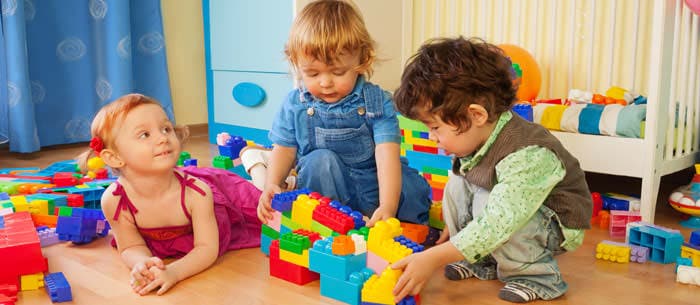Every preschool or nursery school should have a discipline policy which spells out how disruptive behaviour is dealt with. It gives directors and teachers a concrete means of addressing behavioural issues and provides parents with the knowledge of what’s acceptable and expected — of the child, the parents and the preschool. This preschool discipline policy should be a core part of the decision making process when it comes to choosing somewhere for your child.
A preschool should provide all parents with a written copy of their discipline policy — often included in the handbook you receive when touring the facility or registering your child. You should also be updated if any amendments have been made. Make sure you fully understand how problems are handled before you enrol your child. Remember, discipline means to teach, not punish so look for guidelines that emphasise that.
Here are a few of the things that a good preschool discipline policy should address, along with questions you may want to ask the director.
- Preventative Actions
If you spot it early enough, sometimes inappropriate behaviour can be stopped before it has a chance to spiral out of control. When dealing with young children, preventing behaviour is always easier than trying to deal with it after it happens. What are the preschool’s discipline policies for averting problems?
Questions to ask:
- What do you do if you notice a child is particularly moody or disruptive?
- How do you prevent it from becoming an issue?
- Expectations and Consequences
Every action has to have a concrete consequence, and expectations must be clarified within policies. This prevents chaos and confusion.
Questions to ask:
- How are consequences given?
- What is appropriate for different bad behaviours?
- How do you deal with a child having a tantrum, biting or hitting?
- Does the teacher have appropriate expectations and understand that children learn, work and develop at different rates?
- What sort of behaviour would warrant a child being asked to leave the centre altogether?
- Positive Guidance
No licensed nursery school should advocate the use of physical or mental punishment. Again, it’s hard to prevent children from having bad days or displaying inappropriate behaviour — and young children are still learning right from wrong. When something arises, teachers should provide positive guidance and help them to realise how to make safe, healthy choices.
Questions to ask:
- What situation, if any, would warrant the removal of a child from the room or group?
- Where would that child go?
- What would be the protocol for reintroducing the child to the group again?
- How do teachers encourage children to behave appropriately?
- Redirection
Teachers should be able to redirect a child’s attention, offering a different age-appropriate activity than the one they are struggling with, or having trouble cooperating with peers on.
Children feel empowered when they make the right choices, and this encourages them to keep on trying. This may mean that the teacher has to find new ways to be flexible and to acknowledge that a child is attempting to make these choices.
Parents should ask how choices are presented. Some children will be able to handle having access to all of the materials present in the room. Other children may feel overwhelmed and need teacher guidance to make appropriate choices. It’s important to find the right balance for the group.
Questions to ask:
- Are the activities developmentally appropriate in order to reduce frustration?
- Does the program provide a balance of active and quiet time?
- Time Outs
Time out can be an effective preschool discipline policy when redirecting a child or offering positive guidance fails, but it must be used appropriately. Children who need a time out should be supervised at all times. They should only sit for about one minute per their age in years (three minutes for a three-year-old, for example). Before being reintroduced to the group, the carer should get down to the child’s eye level and explain what the child did wrong to land in the time out spot.
Time out was really developed as a time for everyone to cool off, not as punishment. The current trend is actually time-in, where you focus on the child and their actions.
Questions to ask:
- Do you use time outs?
- Where is your time out spot located?
- How long would my child sit in time out?
- What warrants a trip to the time out chair?
- How many time outs are there in an average day?
- What do children learn from the experience?
- Communication Policies
Parents should be notified immediately in case of major or reoccurring behavioural challenges. Teachers should provide a detailed account of any incidents and parents should be required to sign the documents, indicating that they have read and understand what happened. The director should be aware of any ongoing issues.
Questions to ask:
- How will the teachers communicate with me if my child is having problems at nursery school?
- How will consistent behavioural issues be discussed and dealt with?
Parents should ensure they fully understand the preschool discipline policy and ask questions of teachers or administrators for necessary clarification. If you feel strongly enough that a policy should be changed, approach the programme’s owner or director and express your concerns and possible solutions. Communication and involvement will ensure the best care for all children.
When teachers and administrators work with parents to teach and reinforce appropriate behaviour, and when children and parents understand the classroom rules and the teacher’s expectations, it makes for a much more effective learning experience. Children enjoy going to school and they thrive within a safe, comfortable setting.

